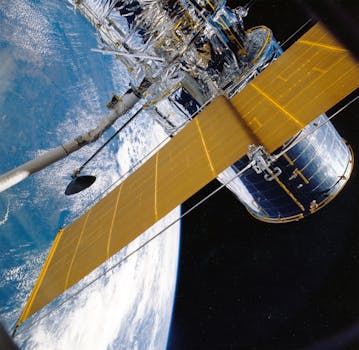The Rise of Mega-Constellations: Latest Updates in Satellite Telecommunications

The Rise of Mega-Constellations: Latest Updates in Satellite Telecommunications
The Rise of Mega-Constellations: Latest Updates in Satellite Telecommunications. The field of satellite telecommunications is undergoing a significant transformation with the emergence of mega-constellations. These constellations consist of thousands of satellites launched into low Earth orbit (LEO) to provide global internet coverage. Companies like SpaceX, Amazon, and OneWeb are leading the charge, with ambitious plans to launch tens of thousands of satellites in the coming years.
One of the primary drivers behind the rise of mega-constellations is the growing demand for high-speed internet access worldwide. Traditional satellite internet services have been limited by their high latency and expensive costs, making them inaccessible to many people, especially in rural and underserved areas. Mega-constellations aim to address this issue by providing low-latency, high-speed internet connectivity to anyone, anywhere in the world.
SpaceX, founded by Elon Musk, is one of the pioneers in the mega-constellation market. Its Starlink project aims to launch nearly 12,000 satellites into LEO by the mid-2020s. Each satellite will be equipped with advanced technology, including Hall effect thrusters and phased array antennas, to provide high-speed internet connectivity. SpaceX has already launched over 1,000 Starlink satellites and has begun offering beta testing to select users.
Technical Challenges and Innovations
Despite the excitement surrounding mega-constellations, there are significant technical challenges that need to be addressed. One of the primary concerns is the issue of space debris. With thousands of satellites being launched into LEO, there is a risk of collisions and the creation of hazardous debris. To mitigate this risk, companies are developing advanced propulsion systems and de-orbiting technologies to ensure that satellites can be safely removed from orbit at the end of their lifespan.
Another technical challenge is the need for advanced antenna technology. Traditional satellite antennas are not designed to handle the high frequencies and bandwidths required for high-speed internet connectivity. To address this issue, companies are developing new types of antennas, such as phased array antennas, which can steer and shape beams electronically to provide high-gain and high-bandwidth connectivity.
In addition to these technical challenges, there are also regulatory hurdles that need to be overcome. The launch of mega-constellations requires coordination with regulatory bodies, such as the Federal Communications Commission (FCC) in the United States, to ensure that the satellites do not interfere with other satellite systems or terrestrial networks.
Market Opportunities and Competition
The rise of mega-constellations is creating new market opportunities for companies involved in the satellite telecommunications industry. One of the primary opportunities is the provision of broadband internet services to underserved areas. With the launch of mega-constellations, companies can offer high-speed internet connectivity to remote and rural areas, where traditional fiber-optic or wireless networks may not be available.
However, the market for mega-constellations is also highly competitive, with multiple companies vying for market share. In addition to SpaceX, other companies, such as Amazon and OneWeb, are also launching their own mega-constellations. Amazon’s Kuiper Systems, for example, plans to launch over 3,000 satellites into LEO, while OneWeb aims to launch over 600 satellites.
The competition in the mega-constellation market is driving innovation and reducing costs. Companies are developing new technologies and business models to differentiate themselves and attract customers. For example, some companies are offering satellite-based internet services directly to consumers, while others are targeting enterprise customers, such as airlines and shipping companies.
Conclusion
In conclusion, the rise of mega-constellations is revolutionizing the field of satellite telecommunications. With the launch of thousands of satellites into LEO, companies are providing global internet coverage and creating new market opportunities. However, there are also significant technical challenges and regulatory hurdles that need to be addressed. As the industry continues to evolve, it will be exciting to see how companies innovate and compete to provide high-speed internet connectivity to anyone, anywhere in the world.




